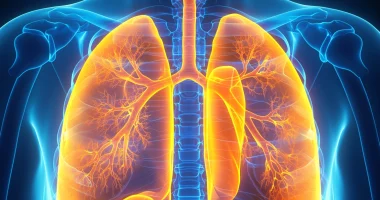Duodenal cancer
Duodenal cancer is a very rare and aggressive malignancy. It accounts for the majority of malignant neoplasms of the small intestine but only 1% of all tumors of the digestive tract. The incidence in North America is reported to be 3-3.7 per million population, and in Europe, 2.9-4.3 per million.
Duodenal cancer is usually not considered separately in the literature but together with tumors of the small intestine. There are no specific treatment protocols for it, and it is generally less well-studied than many other malignancies.
Causes
Because duodenal cancer is rare, the risk factors for its development are poorly understood. It is believed that the disease is caused by the following:
- age 60 to 80;
- some hereditary diseases: cystic fibrosis, familial adenomatous polyposis, Peutz-Jeghers syndrome, MUTYH-associated polyposis, Lynch syndrome;
- A diet high in red meat, sugar, refined carbohydrates (pasta, bread), low in fruits and vegetables;
- smoking, frequent alcohol consumption;
- duodenal polyps;
- Crohn’s disease;
- gluten enteropathy (celiac disease).
Symptoms
The manifestations of duodenal cancer are nonspecific and resemble the symptoms of many other diseases, such as gastroduodenitis:
- abdominal pain;
- nausea, vomiting;
- dark stools due to blood;
- constipation;
- heartburn;
- increased fatigue weakness;
- decreased appetite;
- unexplained weight loss.
Stages
There are five main stages of the disease:
- Stage 0 is “cancer in situ” within the mucosa.
- Stage I is a tumor that has invaded the intestinal wall deeper than the mucosa.
- Stage II – sprouting through the muscular membrane or the entire intestine wall, spreading to neighboring organs.
- Stage III – spread to regional (nearby) lymph nodes.
- Stage IV – duodenal cancer with distant metastases.
Modern diagnostic methods
A malignant tumor in the duodenum can be detected by endoscopic examination – duodenoscopy. Usually, the mucosa of the esophagus, stomach, and duodenum are examined at once – such an examination is called esophagogastroduodenoscopy (EGD). During this study, the doctor can:
- detect benign and malignant neoplasms;
- make a biopsy – obtain a tissue sample of the neoplasm and send it for histologic examination;
- If necessary, perform an endo-ultrasound examination with a miniature transducer to check how much the tumor has grown into the wall of the intestine and whether it has spread to neighboring organs and lymph nodes.
To assess the degree of spread of the tumor process and to clarify the stage of the disease, the following diagnostic methods are used:
- a CT scan;
- MRI;
- radiographic examination of the upper digestive tract with contrast;
- positron emission tomography;
- At later stages, diagnostic laparoscopy – examination of the abdominal cavity using a special instrument with a video camera (laparoscope) inserted through punctures – may be indicated.
Treatment methods
Treatment of duodenal cancer depends on the stage of the disease. Unfortunately, at the moment, there is still little scientific data on when certain techniques and drugs are most effective, and there are no clear treatment protocols. The general approach is the same as for other malignant neoplasms: if the tumor can be removed entirely, surgical treatment is the first choice.
Surgery
The so-called Whipple’s operation (another name is pancreaticoduodenectomy) is most often indicated for resectable duodenal cancer. The duodenum, part of the stomach, pancreas, and nearby lymph nodes are removed during this complex surgical procedure. Often, the gallbladder and part of the bile duct must also be removed. The upper end of the intestine is then connected to the remaining part of the stomach, and the bile ducts are sutured to its wall.
Chemotherapy
In some cases, adjuvant chemotherapy is prescribed after radical surgery. The purpose of chemotherapy is to destroy the cancer cells remaining in the body and thereby reduce the risk of recurrence, which is very high in duodenal cancer.
The efficacy of adjuvant chemotherapy in these malignancies has not been well studied, and it is not entirely clear which combinations of chemotherapeutic agents work best. Most often, treatment is performed in the same way as for adenocarcinomas of the colon and rectum. Patients with metastatic and unresectable duodenal cancer are treated withpalliative chemotherapy.
Radiation therapy
The utility of radiation therapy as an adjuvant treatment for duodenal cancer is not fully understood. Some studies have shown that it has little or no effect on survival rates, but it helps to improve regional control for foci in regional lymph nodes.
Radiation therapy may also be given for inoperable cancer and to control complications such as intestinal obstruction and bleeding.
All these treatment options are available in more than 840 hospitals worldwide (https://doctor.global/results/diseases/duodenal-cancer). For example, Pancreaticoduodenectomy can be done in 25 clinics across Turkey for an approximate price of $18.9 K (https://doctor.global/results/asia/turkey/all-cities/all-specializations/procedures/pancreaticoduodenectomy).
Complications
Duodenal cancer can lead to some complications that require specialized treatment:
- Mechanical jaundice occurs because the tumor blocks the bile ducts and disrupts the outflow of bile. If a patient has this condition, it should be eliminated first. For this purpose, various types of drainage, stenting of bile ducts, and biliodigestive anastomoses are used.
- Intestinal obstruction develops when a malignant tumor completely blocks the intestinal lumen. If the tumor cannot be removed, our surgeons perform palliative interventions, such as duodenal stenting.
- Excruciating pain is caused by compression and lesions of nerve structures. In this complication, all modern types of analgesia are used, including opioid analgesics and neurolysis of the primal plexus.
Prognosis
The five-year survival prognosis (the proportion of patients who live at least five years after diagnosis) for duodenal cancer ranges from 86% for tumors that have not spread outside the organ to 42% for distant metastases.


